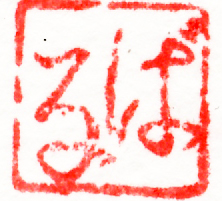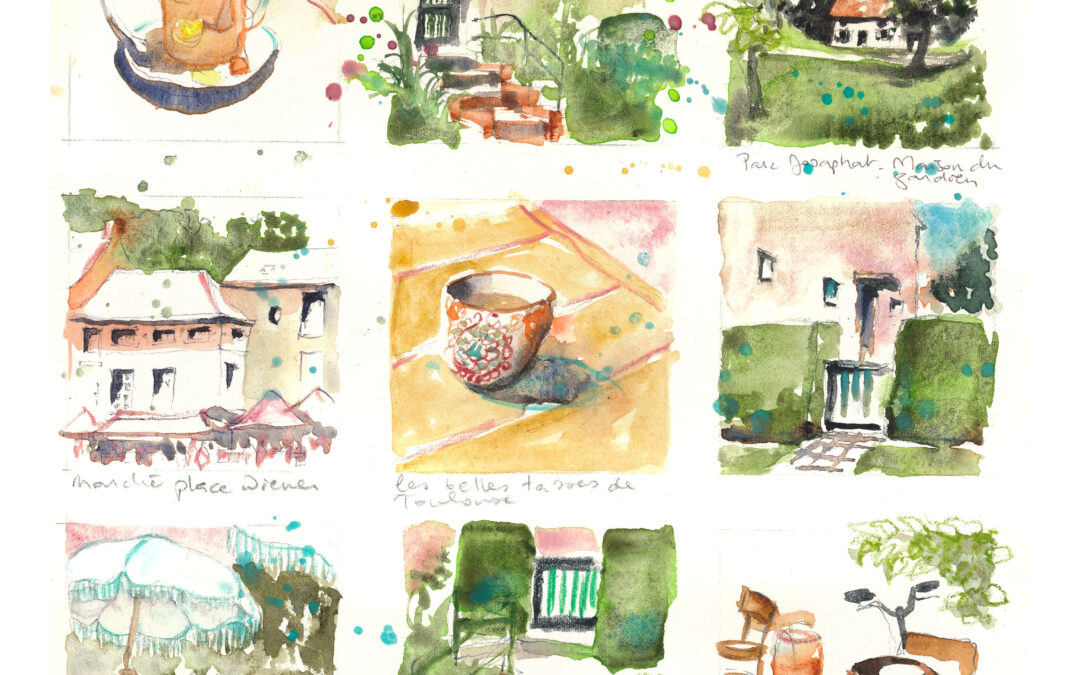“Once is a mistake. Twice is an idea. Three times is style.” – Miles Davis.
I got this great question from Katherine in my mailbox 10 days ago (please send me your questions: I love receiving questions because it gives me great ideas about what to write about!) : “I am a loose watercolor painter and I am struggling to develop my own style. I know what I like just can’t seem to get it out of my head. I have a full time job so I only paint on the weekends or days off if I get time. However, I feel like I should be more accomplished by now. I’ve been painting for many years and still feel like I’m practicing. “
Developing a personal style in any form of art takes time and experimentation, so don’t be too hard on yourself. “Once is a mistake. Twice is an idea. Three times is style.” , said Miles Davis.
Here are some suggestions to help you in your journey of finding your own style as a painter:
- Explore and study different artists: Look for artists whose work you admire and resonate with. Study their techniques, brushwork, color choices, and compositions. Take inspiration from them but also try to understand what makes their style unique. Analyze their paintings and try to incorporate elements that appeal to you into your own work. Artists have been learning this way since forever.
- Experiment with different techniques and subjects: Don’t be afraid to try out new techniques or subjects in your paintings. Experimentation is crucial for artistic growth. Explore different brushstrokes, color combinations, textures, and ways of applying watercolor. Play with different subjects and see how they affect your style and expression.
- Keep a sketchbook: Carry a sketchbook with you and use it to capture ideas, observations, and quick studies. Sketching regularly helps you develop your observational skills and allows you to explore ideas more freely. It’s a low-pressure way to experiment and develop your artistic voice.
- Analyze your own work: Take the time to analyze your own paintings objectively. Identify what aspects you enjoy the most and what you feel needs improvement. Look for patterns and recurring themes in your work. This self-reflection will help you understand your artistic inclinations and guide you towards developing your unique style.
- Allow yourself to make mistakes: Don’t be afraid to make mistakes or produce less-than-perfect paintings. Sometimes the most valuable lessons and breakthroughs come from experimenting and taking risks. Embrace the learning process and view each painting as an opportunity for growth rather than focusing solely on the end result. Your mistakes are “your babies”! Like Nishant Jain wrote in one of his last blogposts: “Style is an accumulation of mistakesand the ideas that emerge from dealing with them. To get there, you have to spend time with your mistakes. They tell you what you care about and, equally, what you do not care about. This is useful information. Working around mistakes, instead of undoing them, leads to the discovery of unexpected solutions. Good ideas come out of this.”
- Paint regularly, even in short bursts: While you may have limited time due to your full-time job, it’s important to paint regularly, even if it’s only for short periods. Consistency is key in improving your skills and developing your style. Set aside specific painting sessions, even if they are brief, and make the most of the time you have available.
- Seek feedback and participate in art communities: Share your work with others and seek constructive feedback from fellow artists or art communities online, like the urbansketchers. Maybe there’s a nice urbansketchers group in your area with whom you can go sketching outside? Engaging with other artists can provide fresh perspectives, encouragement, and guidance. Participate in workshops, classes, or local art groups to connect with like-minded individuals who can inspire and support you on your artistic journey.
- Follow your taste: use your favorite tools and use your favorite colors, even if they’re not the colors you’re observing around you. You like thick lines? Draw with thick lines. You love pink? Add some pink ! Your taste will determine your style.
Remember that finding your own style is a personal and ongoing process. Embrace the joy of creating art and enjoy the journey rather than focusing solely on the destination. Keep experimenting, learning, and expressing yourself through your paintings, and your unique style will gradually emerge over time.
Last Saturday I did a Thumbnail Sketching workshop with Arttoolkit. There was a great energy and people seemed to love it. So I’m working on a Skillshare Class about Thumbnails. These mini-paintings are the ideal way to play around and experiment, even if you don’t have a lot of time in your daily life, because such a mini-painting doesn’t take a lot of time…
They’re the playground in search for your “style”, because they help you get rid of perfectionism and the fear of ruining your page 🙂
Do you sometimes sketch thumbnails?
Mine are most of the time about 5cmx5cm (or 2inch by 2 inch), but sometimes bigger.
Here I ‘m working on a page where there are several different sizes on one page and I kind of like it.



You have totally inspired me to paint thumbnails (I was in the class through Art Toolkit, although I had to watch it on video later). I am curious about the names of the paints in your palette….I did get the picture of your palette colors but not the product names. Do you share that?
Hello Carol !
Thank you so much! I’m so happy you were inspired by the thumbnail class !
Sure I can share the color palette.
Here you can see how I fill them and you can see all the colors: https://youtu.be/UtFsP2uzFFs
I use several brands: Daniel Smith, Winsor&Newton, Schmincke (some super granulating colors) and Holbein (Shell pink)
Tell me if you have any other questions
Thank you, Barbara! I look forward to watching that!
Hey, Barbara–another question! I watched the youtube video but at the very end you add some colors to your warm palette that aren’t identified! Do you mind taking a look and telling me what the last four to five colors were? I’m guessing cobalt teal turquoise, sap or green gold, lunar black? Thanks!
Genial Barbara,me encanta tu estilo y la inspiracion.